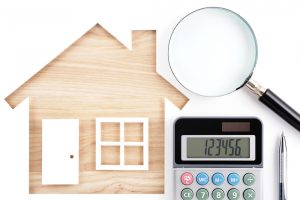For most people to finance a new home, they'll need to go to the bank for a loan. That's normal, but the appraisal process might not be so normal for a custom home. A lot of this has to do with the location of the home and a lack of comparable houses (also called "comps").
 The appraiser's job is to reasonably estimate the value of a home for the bank. The bank is investing in your home, because if you end up not being able to pay for it, they'll have to sell it. Most banks want to help you make the deal but you might run into issues if there are few comps for your house in the area.
The appraiser's job is to reasonably estimate the value of a home for the bank. The bank is investing in your home, because if you end up not being able to pay for it, they'll have to sell it. Most banks want to help you make the deal but you might run into issues if there are few comps for your house in the area.
If you're planning on building a custom home, it can be helpful to know what might count against you in an appraisal, and how they'll be evaluating the plan for your home. You may want to rethink some of your home's features, or just put in more leg work to find comps for your home. Here are a couple things to know about the appraisal process.
What's important to you may not be what's important to the bank
Some features are what we call "low value, high cost" items. They might be high on your list of desirables, and you may be able to find ways to fit them in, but they will probably count against you in an appraisal.
A basement is a good example of this—you're basically building a really expensive concrete wall underground and putting a room or two inside. Considering the plumbing, excavation, and concrete cost, without adding a significant amount of square footage, a basement is not going to be considered a value-add by an appraiser.
Another low value, high cost item is a wraparound porch. You have most of the structural elements of an extra room, but it doesn't count toward the square footage of your house.
Does that mean you should give up your dreams of a wraparound porch or a basement? Not necessarily. But it's worth talking with your builder about whether or not that will make the appraisal for your house a bigger hurdle than you want.
How does an appraiser evaluate your house?
One reason low value, high cost items count against you in an appraisal is because they increase the cost of your house proportionally more than they increase the square footage of your house. That factors into the appraisal process, since the appraiser is acting on the bank's behalf to decide if your home is a worthwhile investment.
There are three main methods of evaluation for a home appraisal.
- Value comparison: This method relies on comparing properties that are similar to your home plan to estimate your home's value. It's the most commonly used, and that's why finding comp properties for your home is necessary.
- Cost approach: The appraiser estimates the cost of construction. This method isn't very accurate, though, because appraisers use a national database to determine cost, and materials cost different amounts based on what part of the country you're in.
- Income approach: This takes into account whether or not the home is going to be an income-producing property. It's not a very common method of appraisal.
Time to determine your needs
Armed with this information, you can determine whether or not you need to cut out any high cost, low value items in your home, or if you need to find more comp properties. If you're building in a relatively undeveloped area, it's especially important to find comp properties to share with your appraiser. Your builder or real estate agent should be able to help you find good ones.
Learn more about construction loans and custom home financing.
Download our free guide, From Raw Land to Forever Home, to learn more about the whole process of building a custom home on your land.

